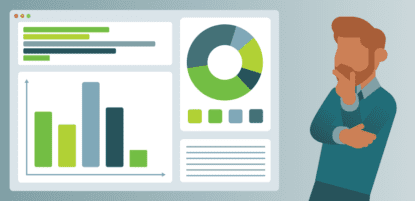Why payment authorization is key to AP security and efficiency
Payment authorization plays a critical role in protecting businesses from financial risks and inefficiencies in the modern accounts payable (AP) landscape. Without robust safeguards, organizations are vulnerable to unauthorized transactions, fraudulent activities, and costly errors that can undermine their financial stability.
As payment methods evolve and operational demands increase, the need for secure and efficient payment authorization processes has never been greater. By addressing these challenges head-on, businesses can mitigate risks, enhance accuracy, and build a more resilient AP system.
Key takeaways
- Payment authorization is critical for ensuring financial accuracy and security.
- Manual payment processes are prone to fraud, compliance risks, and inefficiencies.
- Automation simplifies payment authorization, enhances visibility, reduces errors, and can integrate seamlessly with existing systems.
What is payment authorization and why is it important?
Payment authorization refers to the structured approval of payments made to vendors, suppliers, or service providers. This step is essential for maintaining financial integrity by confirming the legitimacy and accuracy of each transaction before money changes hands.
In the context of risk management, payment authorization acts as a critical defense against fraudulent activity. By incorporating safeguards and pre-approval checks, businesses can better protect their assets from unauthorized access or misuse. Additionally, adherence to authorization protocols helps companies meet regulatory standards, mitigating potential legal liabilities and fines.
What is the payment authorization process?
The payment authorization process varies across payment methods but generally follows these steps:
- Invoice submission
- Invoice validation
- Internal approval
- Payment authorization
- Payment execution
Let’s take a closer look at each step in more detail below.
1. Invoice submission
The payment authorization process begins when a supplier sends an invoice to the buyer’s accounts payable (AP) team. This invoice includes critical details such as the products or services provided, quantities, agreed-upon prices, and payment terms.
2. Invoice validation
The AP team validates the invoice to ensure it matches the purchase order (PO) and delivery receipt. They check for discrepancies in pricing, quantities, or terms and confirm compliance with both regulatory and company-specific requirements. The AP team may also validate account coding and expense allocation when entering the invoice into their accounting system.
3. Internal approval
Once validated, the invoice is routed through the company’s approval hierarchy. Lower-value invoices may require approval from a single stakeholder, while high-value or recurring invoices often need sign-offs from department heads or senior management.
4. Payment authorization
After approval, the AP team verifies that funds are available and confirms the payment terms and method (e.g., ACH transfer, wire transfer). At this stage, additional fraud prevention measures, such as enforcing role-based access controls or segregation of duties, are implemented.
5. Payment execution
Once authorized, the payment is processed securely through the chosen method. The supplier receives confirmation of payment, including remittance details, and both parties update their financial records.
What are some of the common challenges in manual payment authorization?
Traditional payment authorization processes rely heavily on human input, creating vulnerabilities that can disrupt operations, increase risks, and limit efficiency. A few of the common challenges in manual payment authorization include:
- Compliance risks
- Fraud exposure
- Lack of oversight
- Human error
Let’s take a deeper dive into each of these challenges below.
Compliance risks
Adhering to regulatory standards is essential for any organization, but manual payment workflows often lack the necessary checks and documentation to meet these requirements. Discrepancies in how invoices are approved, documentation is handled, or payments are processed can lead to violations of internal controls, regulatory requirements, or contractual obligations.
Fraud exposure
Fraud remains a significant concern in manual systems. The lack of robust controls makes businesses susceptible to phishing attacks, unauthorized payments, and other fraudulent activities. In particular, business email compromise (BEC) schemes can exploit weaknesses in manual payment approvals, leading to substantial financial losses. Plus, manual processes make it difficult to detect fraudulent transactions due to a lack of automated alerts and tracking mechanisms.
Lack of oversight
Manual payment processes often operate in silos, making it difficult to maintain a clear view of payment statuses and approval workflows. This lack of visibility can lead to missed deadlines, unapproved payments, and an inability to identify discrepancies or irregularities in real time. As a result, businesses may face delayed payments to vendors, damaged relationships, and disruptions to their supply chain.
Human error
Mistakes are inevitable in manual workflows. Errors such as data entry inaccuracies, duplicated payments, or misfiled invoices can disrupt cash flow. Alternatively, missed payments can strain vendor relationships and risk organizations’ ability to negotiate favorable payment terms.
How can businesses improve their payment authorization processes?
Improving payment authorization processes is essential for businesses looking to enhance efficiency, reduce risk, and maintain compliance. The following approaches outline some practical ways to modernize and optimize payment authorization:
- Increased visibility
- Real-time monitoring and alerts
- Implement dual controls
- Automate the entire end-to-end AP process
Below is a more in-depth look at the different ways you can optimize payment authorization.
Increased visibility
Improving visibility into payment workflows is a crucial step toward enhancing decision-making and operational efficiency. Centralized AP automation solutions provide a single source of truth for all payment-related activities, allowing finance teams to access real-time updates on payment statuses, approval workflows, and pending actions. This transparency helps businesses identify bottlenecks, prioritize critical payments, and ensure that no invoice is overlooked.
Real-time monitoring and alerts
Real-time monitoring and alerts enable businesses to stay ahead of potential issues by providing timely notifications about pending approvals, anomalies, or suspicious activities. For example, if an unusually high-value transaction is initiated, AP automation solutions can flag it for additional review, ensuring compliance and security protocols are maintained. Automated alerts also keep stakeholders informed about their tasks, reducing delays caused by miscommunication or overlooked responsibilities.
Implement dual controls
Dual controls are a simple yet highly effective measure to enhance security in payment authorization. By requiring multiple levels of approval for high-value transactions, businesses can significantly reduce the risk of fraud and errors. For instance, while an AP manager may verify an invoice, a senior executive or controller can provide the final authorization before funds are disbursed. This segregation of duties ensures that no single individual has unchecked control over payments, adding an essential layer of oversight and accountability.
Automate the entire end-to-end AP process
End-to-end automation transforms the accounts payable process into a seamless and efficient operation. By automating every step—from invoice capture to payment execution—businesses can eliminate the inefficiencies inherent in manual AP workflows. According to the 9th Annual State of AP Report, 40% of respondents have already automated payment authorization routing, and 23% plan to optimize it further within the next 12 months. With advanced automation solutions, businesses can also integrate with existing accounting and ERP systems, ensuring data consistency and streamlined reconciliation.
What are the benefits of automating payment authorization?
Automation is revolutionizing payment authorization by replacing manual processes with streamlined, technology-driven solutions. AP automation provides a superior option for a few different reasons:
- Better fraud prevention
- Fewer errors and duplicate payments
- Enhanced efficiency
- Payment system integration
Let’s take a closer look at each one below.
Better fraud prevention
Fraud prevention in accounts payable (AP) goes beyond basic cybersecurity measures, focusing on targeted strategies like enforcing role-based access controls, segregation of duties, and vendor verification. These safeguards ensure no single employee can initiate and approve payments, reducing the risk of internal fraud while maintaining accountability. Automation platforms further enhance security by flagging anomalies such as duplicate invoices and providing real-time alerts for suspicious activities, including altered vendor details or unusual payment requests. By integrating these controls, businesses can mitigate risks from both internal fraud and external schemes like business email compromise (BEC).
Fewer errors and duplicate payments
Manual data entry is a significant source of errors in payment authorization. Automation, combined with technologies like optical character recognition (OCR), eliminates this risk by accurately capturing and processing payment details from invoices and other documents. OCR ensures that data is extracted with precision, minimizing errors such as duplicate payments or incorrect amounts. This enhanced accuracy reduces the administrative burden of correcting errors and resolving disputes with vendors, allowing teams to focus on higher-value activities.
Enhanced efficiency
Efficiency is one of the most transformative benefits of AP automation. Automated systems streamline workflows by accelerating approval processes, routing invoices to the appropriate approvers instantly, and reducing the time spent on mundane tasks. This allows finance teams to allocate more time to strategic initiatives, such as financial planning or vendor relationship management. Additionally, streamlined payment processing improves cash flow management and ensures that vendors receive payments on time, strengthening business relationships.
Payment system integration
Integrating payment authorization with accounting and ERP systems creates a unified ecosystem where data flows seamlessly between platforms. This ensures consistency across financial records, simplifies reconciliation processes, and provides real-time visibility into payment statuses. With a fully integrated system, businesses can generate accurate financial reports, maintain compliance, and streamline audit preparation. Integrated systems also support scalability, enabling businesses to manage higher transaction volumes as they grow.
Improve the payment authorization process with MineralTree
MineralTree’s AP automation solutions are designed to simplify and secure the payment authorization process. With advanced features like real-time monitoring, dual controls, and seamless integration, the platform empowers your team to optimize their AP processes, reduce costs, and mitigate risks. Interested in learning more? Schedule a demo today.

Payment authorization FAQs
Tl;dr? If you’re short on time, the frequently asked questions below provide a quick snapshot of what you need to know about payment authorization.
1. What is a payment authorization form?
A payment authorization form is a document or digital form used to approve payments. It typically includes details such as the vendor’s information, payment amounts, the purpose of the transaction, and necessary signatures or approvals. These forms serve as an official record of authorization, ensuring accountability and compliance.
2. What are the steps of payment authorization automation?
Payment authorization automation streamlines the approval process with precise, technology-driven steps that enhance efficiency and accuracy.
- Invoice capture using advanced technologies like OCR for accuracy
- Verification of invoice data against purchase orders or contracts
- Automated routing of approvals based on pre-set rules
- Execution of payments through secure, integrated systems
3. How can payment authorization automation help prevent fraud?
Automation platforms reduce fraud risks by implementing role-based access controls and enforcing segregation of duties, ensuring that no single individual has complete control over the payment process. Vendor verification tools validate supplier details to prevent payments to fraudulent or unverified vendors, while systems automatically flag duplicate invoices or unusual payment amounts for further review. Real-time monitoring and alerts provide additional safeguards by identifying suspicious activities, such as altered payment details or unauthorized transactions, enabling businesses to act swiftly. These automation-driven measures are particularly effective against schemes like business email compromise (BEC) and internal fraud, ensuring secure and accountable payment workflows.
4. How can payment authorization automation help maintain compliance?
Automation ensures adherence to financial regulations by maintaining detailed payment records, enforcing approval hierarchies, and providing transparent audit trails. These features make it easier to comply with laws such as the Sarbanes-Oxley Act or GDPR.



